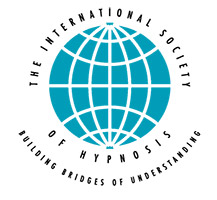
Eye movement desensitization and reprocessing (EMDR) is a form of psychotherapy to resolve the development of trauma-related disorders caused by exposure to distressing events such as rape or military combat. When a traumatic or distressing experience occurs, it may overwhelm usual cognitive and neurological coping mechanisms. The memory and associated stimuli of the event are inadequately processed, and are dysfunctionally stored in an isolated memory network.
The goal of EMDR therapy is to process these distressing memories, reducing their lingering influence and allowing developing more adaptive coping mechanisms.
Although EMDR may be used for other problems, its research support is primarily for disorders stemming from distressing life experiences, such as post-traumatic stress disorder.
EMDR integrates elements of effective psychodynamic, imaginal exposure, cognitive therapy, interpersonal, experiential, physiological and somatic therapies. Distinguishing EMDR from other therapies, however, is the unique element of bilateral stimulation EMDR uses a structured approach to address the past, present, and future aspects of a traumatic or distressing memory that has been dysfunctionally stored.
During the processing phases of EMDR, focus on disturbing memory in multiple brief sets of about 15–30 seconds. Simultaneously, focus on the dual attention stimulus. Following each set of such dual attention, question is asked what associative information was elicited during the procedure. This new material usually becomes the focus of the next set.
This process of alternating dual attention and personal association is repeated many times during the session. When traumatic memory networks are activated, re-experiencing aspects of the original event, often resulting in inappropriate overreactions.
This explains why people who have experienced or witnessed a traumatic incident may have recurring sensory flashbacks, thoughts, beliefs, or dreams. An unprocessed memory of a traumatic event can retain high levels of sensory and emotional intensity, even though many years may have passed.
The theory is that EMDR works directly with memory networks and enhances information processing by forging associations between the distressing memory and more adaptive information contained in other semantic memory networks. It is thought that the distressing memory is transformed when new connections are forged with more positive and realistic information.
This result in a transformation of the emotional, sensory, and cognitive components of the memory; when the memory is accessed, the individual is no longer distressed. Instead he/she recalls the incident with a new perspective, new insight, resolution of the cognitive distortions, elimination of emotional distress, and relief of related physiological arousal.
When the distressing or traumatic event is an isolated, single incident (e.g., a traffic accident), approximately three sessions are necessary for comprehensive treatment. When multiple traumatic events contribute to a health problem—such as physical, sexual, or emotional abuse, parental neglect, severe illness, accident, injury, or health-related trauma that result in chronic impairment to health and well-being, or combat trauma, the time to heal may be longer, and complex, multiple trauma may require many more sessions for the treatment to be complete and robust.
Although EMDR is established as an evidence-based treatment for post-traumatic stress disorder, there are two main perspectives on EMDR therapy. First, although a number of different processes underlie EMDR, the eye movements add to the therapy's effectiveness by evoking neurological and physiological changes that may aid in the processing of the trauma memories being treated.
The other perspective is that the eye movements are an unnecessary epiphenomenon, and that EMDR is simply a form of desensitization.








